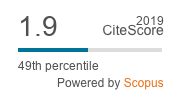Biting midges of the genus Culicoides (Diptera; Ceratopogonidae) are the main vectors of several arboviral diseases such as bluetongue, African horse sickness and epizootic haemorrhagic disease among others. Culicoides females acquire the virus from mammal hosts by haematophagous feeding and they transmit the virus to the following host after the completion of the extrinsic incubation period. Despite the importance of Culicoides during the last two decades after several waves of bluetongue outbreaks in regions such as Europe, there is still a lack of effective control methods against the vectors. In addition, little information is also available about crucial aspects of their bioecology that will lead to a better use of control methods. Here we review the major control methods developed for control of Culicoides spp. Those methods also need monitoring tools to estimate the abundance and seasonality of adult and larvae Culicoides populations. Control methods reviewed here include mechanical methods, chemical methods including ‘in vitro’ trials, semifield and field trials, as well as biological, genetic and biotechnological control methods. At the moment of writing this review, insecticide pour-on treatments as well as the use of vector-proof establishment appear to be the most efficacious method to protect domestic animals against Culicoides feeding activity.
Keywords: Culicoides, vector, control, bluetongue, monitoring






